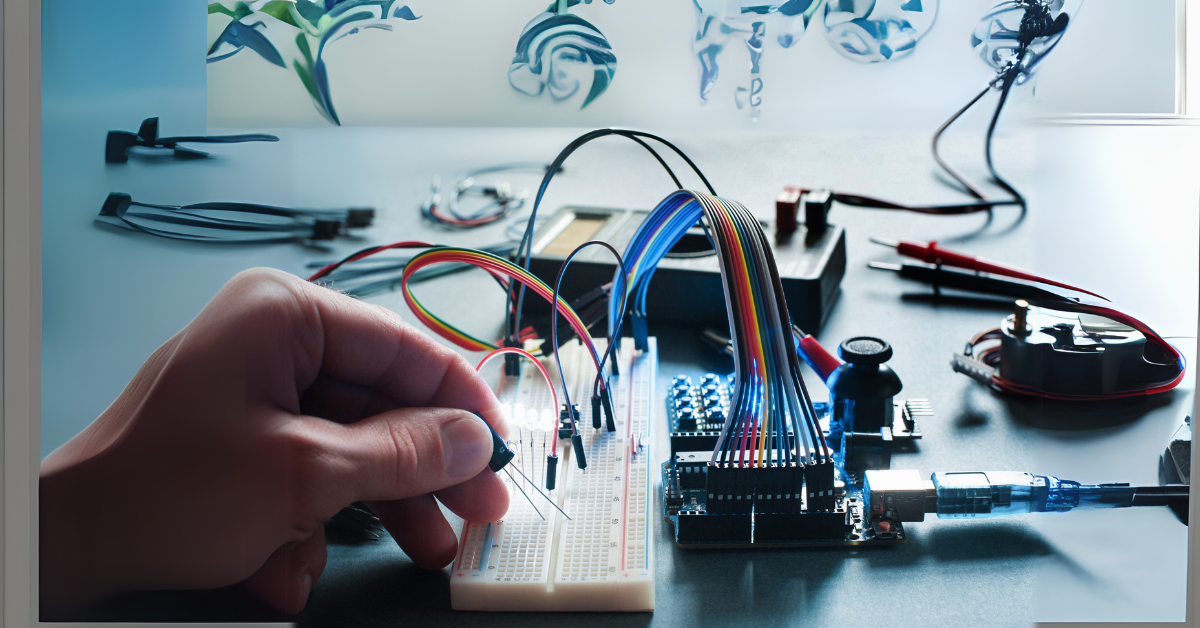
Level 1: Fundamentals of Electrical Circuits and Systems
Course Overview:
The Fundamentals of Electrical Circuits and Systems course is designed to provide students with a solid understanding of basic electrical circuits, components, and systems. This course introduces key principles such as Ohm’s Law, Kirchhoff’s Laws, series and parallel circuits, and introduces students to the fundamental building blocks of electrical engineering. This is the perfect starting point for anyone looking to pursue further studies or a career in electrical or electronic engineering.
Benefits:
- Basic Understanding: Gain a clear understanding of electrical circuits and systems from the ground up.
- Hands-On Practice: Practical exercises help reinforce theoretical concepts through circuit-building and system analysis.
- Real-World Application: Learn to apply circuit analysis techniques in real-world electrical systems.
- Foundational Knowledge for Further Study: Prepare for more advanced courses in electrical engineering and electronics.
- Improved Troubleshooting Skills: Learn how to troubleshoot common electrical problems and analyze circuits effectively.
Learning Outcomes:
By the end of the course, students will be able to:
- Understand and apply the fundamental concepts of electrical circuits.
- Identify and explain the role of key components in electrical circuits such as resistors, capacitors, and inductors.
- Use Ohm’s Law and Kirchhoff’s Laws to analyze and solve electrical circuits.
- Understand the principles of series and parallel circuits and how they differ.
- Analyze both DC (Direct Current) and AC (Alternating Current) circuits.
- Understand basic circuit protection and safety measures.
Study Units:
- Introduction to Electrical Circuits
- Overview of basic electrical circuits and their components.
- The role of electrical engineering in everyday systems.
- Ohm’s Law
- Introduction to voltage, current, resistance, and their relationships.
- Understanding and applying Ohm’s Law in circuit analysis.
- Kirchhoff’s Laws
- Kirchhoff’s Current Law (KCL) and Kirchhoff’s Voltage Law (KVL).
- How to apply KCL and KVL to solve circuit problems.
- Series and Parallel Circuits
- Difference between series and parallel circuits.
- How to calculate total resistance, current, and voltage in series and parallel circuits.
- Basic Circuit Components
- Introduction to resistors, capacitors, inductors, and their behavior in circuits.
- Understanding the role of each component in the circuit.
- DC Circuits
- Understanding Direct Current circuits and analyzing simple DC circuits.
- Power calculations in DC circuits.
- AC Circuits
- Introduction to Alternating Current (AC) circuits.
- Understanding the basics of AC circuit analysis and components.
- Circuit Protection and Safety
- Overview of circuit protection devices like fuses, circuit breakers, and grounding.
- Electrical safety practices for working with circuits.
Career Progression:
After completing this course, students can pursue the following career options or further studies:
- Electrical Engineering Technician
- Electrical Circuit Designer
- Maintenance Technician
- Electrical System Analyst
- Power Distribution Engineer
- Control Systems Engineer
- Further Studies in Electrical Engineering
This course provides a solid foundation for entry-level positions in the electrical engineering field or for continued studies at a higher level.
Why Choose Us?
- Industry-Relevant Curriculum: Learn the key principles needed for success in electrical engineering.
- Hands-On Learning: Engage in practical exercises and circuit analysis to reinforce your understanding.
- Expert Instructors: Learn from instructors with extensive industry experience and expertise in electrical systems.
- Certified and Recognized Course: Receive a certificate recognized in the electrical engineering field.
- Flexible Learning: Study at your own pace with comprehensive materials and resources available online.
This course is ideal for anyone looking to start their career in electrical engineering or those seeking to strengthen their understanding of electrical circuits and systems.
Our assessment process is designed to ensure every learner achieves the required level of knowledge, skills, and understanding outlined in each course unit.
Purpose of Assessment
Assessment helps measure how well a learner has met the learning outcomes. It ensures consistency, quality, and fairness across all learners.
What Learners Need to Do
Learners must provide clear evidence that shows they have met all the learning outcomes and assessment criteria for each unit. This evidence can take different forms depending on the course and type of learning.
Types of Acceptable Evidence
Assignments, reports, or projects
Worksheets or written tasks
Portfolios of practical work
Answers to oral or written questions
Test or exam papers
Understanding the Structure
Learning outcomes explain what learners should know, understand, or be able to do.
Assessment criteria set the standard learners must meet to achieve each learning outcome.
Assessment Guidelines
All assessment must be authentic, current, and relevant to the unit.
Evidence must match each assessment criterion clearly.
Plagiarism or copied work is not accepted.
All learners must complete assessments within the given timelines.
Where applicable, assessments may be reviewed or verified by internal or external quality assurers.
Full learning outcomes and assessment criteria for each qualification are available from page 8 of the course handbook.
Top Courses
No results found.
Related Courses
Let's Get in touch
Deleting Course Review
Course Access
This course is password protected. To access it please enter your password below:

